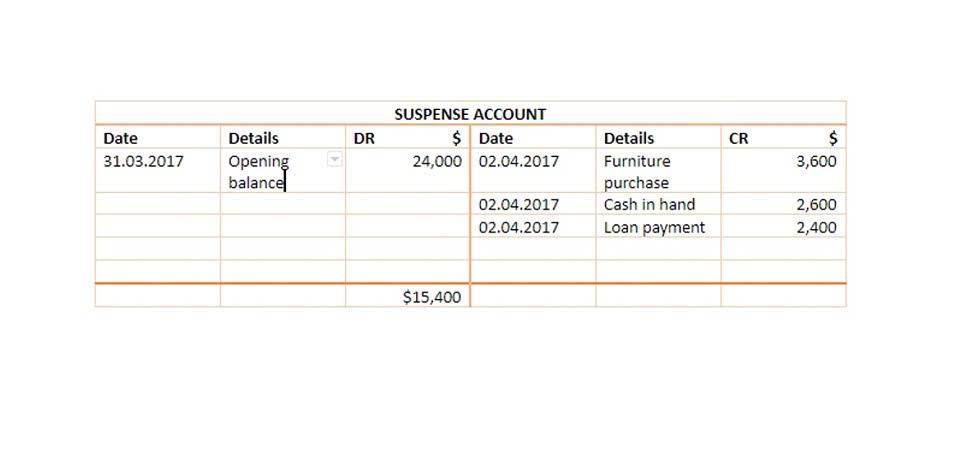
For a start-up business, the beginning amounts for all accounts are zero. The cumulative impact of all https://www.facebook.com/BooksTimeInc/ the additions and subtractions gives the ending amount which appears in the balance sheet at the end of the period. Financial analysis often involves both using or analyzing historic information and forecasting forward-looking financial statements. A thorough understanding of the engineering behind financial statements is essential for a valuation assignment or an M&A transaction.

Additional Resources
- Below are some examples of transactions and how they affect the accounting equation.
- For every transaction, both sides of this equation must have an equal net effect.
- Incorrect classification of an expense does not affect the accounting equation.
- The equation remains balanced, as assets and liabilities increase.
- For example, if a company buys a $1,000 piece of equipment on credit, that $1,000 is an increase in liabilities (the company must pay it back) but also an increase in assets.
- The three main systems used in business are manual, cloud-based accounting software, and ERP software.
- To learn more about the income statement, see Income Statement Outline.
Accountants and members of a company’s financial team are the primary users of the accounting equation. Understanding how to use the formula is a crucial skill for accountants because it’s a quick way to check the accuracy of transaction records . Now, these changes in the accounting equation get recorded into the business’ financial books through double-entry bookkeeping. It’s essentially the same equation because net worth and owner’s equity are synonymous with each other.
D. Double Entry Accounting System
- The equity consists of the contribution of the owner and the retained earnings.
- According to the revenue recognition principle, the company cannot recognize that revenue until it meets this performance obligation or in other words provides the service.
- For example, accounts payable are monies owed to suppliers as a result of that supplier delivering goods or services at some time in the past.
- It shows that assets owned by a company are coupled with claims by creditors and lenders (liabilities), and by the owners of the business (capital).
- Even when the balance sheet balances itself out, there is still a possibility of error that doesn’t involve the accounting equation.
- They are amalgamated and subsequently presented in form of a Balance Sheet that is simply a representation of the accounting equation in itself.
It’s a tool used by company leaders, investors, and analysts that better helps them understand the business’s financial health in terms of its assets versus liabilities and equity. If the fundamental accounting equation left side of the accounting equation (total assets) increases or decreases, the right side (liabilities and equity) also changes in the same direction to balance the equation. The accounting equation equates a company’s assets to its liabilities and equity. This shows all company assets are acquired by either debt or equity financing. For example, when a company is started, its assets are first purchased with either cash the company received from loans or cash the company received from investors.
Basic Accounting Equation Formula
The decrease to assets, specifically cash, affects the balance sheet and statement of cash flows. The decrease to equity as a result of the expense affects three statements. The income statement would see a change to expenses, changing net income (loss). Net income (loss) is computed into retained earnings on the statement of retained earnings. This change to retained earnings is shown on the balance sheet under stockholder’s equity.


For instance, if a business takes a loan from a bank, the borrowed money will be reflected in its balance sheet as both an increase in the company’s assets and an increase in its loan liability. The accounting equation states that a company’s total assets are equal to the sum of its liabilities and its shareholders’ equity. The accounting equation plays a significant role as the foundation of the double-entry bookkeeping https://www.bookstime.com/ system. The primary aim of the double-entry system is to keep track of debits and credits and ensure that the sum of these always matches up to the company assets, a calculation carried out by the accounting equation. It is based on the idea that each transaction has an equal effect. It is used to transfer totals from books of prime entry into the nominal ledger.

The relationship between the accounting equation and your balance sheet
Thus, all of the company’s assets stem from either creditors or investors i.e. liabilities and equity. With the accounting equation expanded, financial analysts and accountants can better understand how a company structures its equity. Additionally, analysts can see how revenue and expenses change over time, and the effect of those changes on a business’s assets and liabilities.
